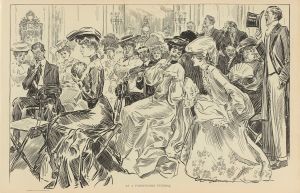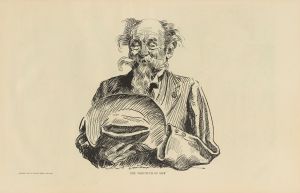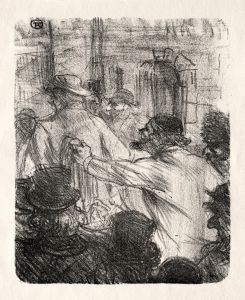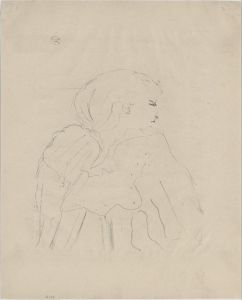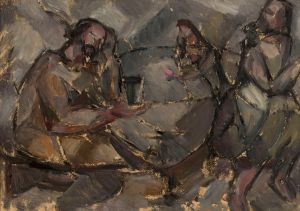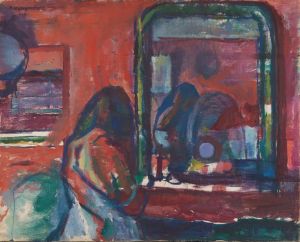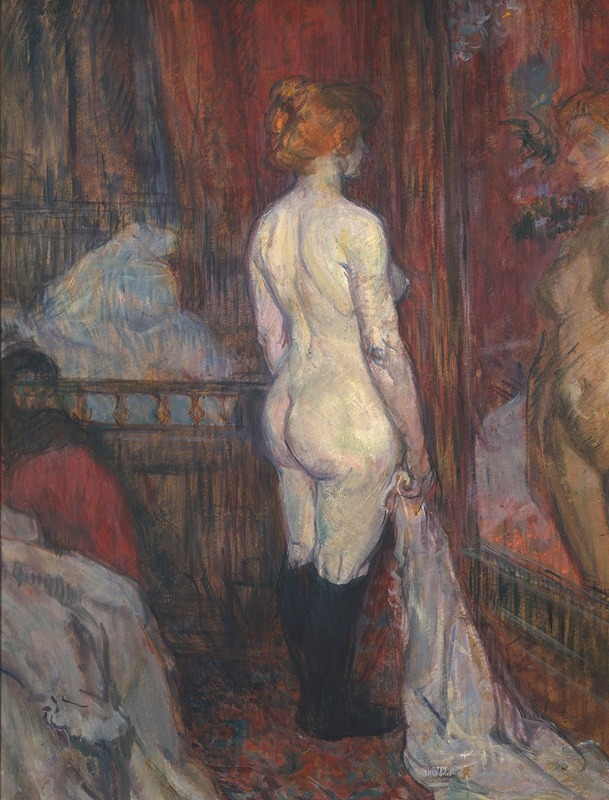
Woman before a Mirror
A hand-painted replica of Henri de Toulouse-Lautrec’s masterpiece Woman before a Mirror, meticulously crafted by professional artists to capture the true essence of the original. Each piece is created with museum-quality canvas and rare mineral pigments, carefully painted by experienced artists with delicate brushstrokes and rich, layered colors to perfectly recreate the texture of the original artwork. Unlike machine-printed reproductions, this hand-painted version brings the painting to life, infused with the artist’s emotions and skill in every stroke. Whether for personal collection or home decoration, it instantly elevates the artistic atmosphere of any space.
Henri de Toulouse-Lautrec, a prominent French painter, printmaker, and illustrator, is renowned for his depictions of Parisian nightlife in the late 19th century. One of his works, "Woman before a Mirror," exemplifies his unique style and focus on capturing intimate and candid moments. Toulouse-Lautrec's art often portrayed the bohemian lifestyle of Paris, particularly in the Montmartre district, where he spent much of his time.
"Woman before a Mirror" is an oil painting created in 1897. This work reflects Toulouse-Lautrec's fascination with the human figure and his ability to convey emotion and character through his subjects. The painting depicts a woman standing in front of a mirror, a common theme in art that explores self-reflection and identity. The woman is shown in a private moment, absorbed in her own image, which is a testament to Toulouse-Lautrec's interest in capturing the unguarded, everyday moments of life.
The composition of "Woman before a Mirror" is notable for its use of color and line, which are characteristic of Toulouse-Lautrec's style. The artist employs a muted palette, with soft tones that create a sense of intimacy and focus on the subject. The brushwork is loose and expressive, allowing the viewer to sense the immediacy of the moment. Toulouse-Lautrec's use of line is also significant; his outlines are bold and fluid, defining the form of the woman and the mirror with a sense of movement and life.
Toulouse-Lautrec's work is often associated with the Post-Impressionist movement, which sought to build upon the innovations of Impressionism while exploring new directions in color, form, and subject matter. His paintings frequently feature the nightlife and entertainment venues of Paris, such as cabarets, dance halls, and brothels. However, "Woman before a Mirror" offers a more introspective view, focusing on a solitary figure rather than a bustling scene.
The painting is housed in the collection of the Musée Toulouse-Lautrec in Albi, France, which is dedicated to the artist's work. The museum holds a significant number of his paintings, drawings, and lithographs, providing a comprehensive overview of his artistic career. Toulouse-Lautrec's legacy is marked by his ability to capture the essence of his subjects with empathy and insight, and "Woman before a Mirror" is a prime example of this talent.
Henri de Toulouse-Lautrec's life was as colorful and complex as his art. Born into an aristocratic family in 1864, he suffered from health problems that stunted his growth and left him with a distinctive appearance. Despite these challenges, he pursued a career in art, studying in Paris and becoming a central figure in the city's vibrant cultural scene. His work was celebrated for its originality and depth, and he remains an influential figure in the history of art.
"Woman before a Mirror" continues to be appreciated for its artistic merit and its insight into the human condition. Through this painting, Toulouse-Lautrec invites viewers to contemplate themes of self-perception and the private moments that define our lives. His ability to convey such themes with sensitivity and skill ensures that his work remains relevant and admired to this day.





